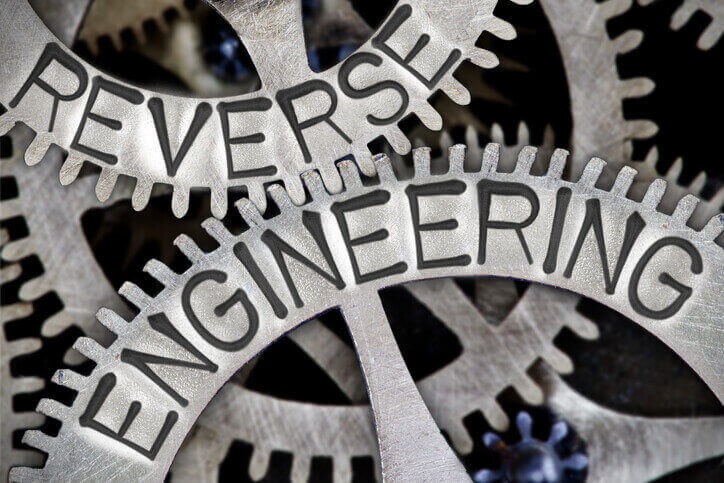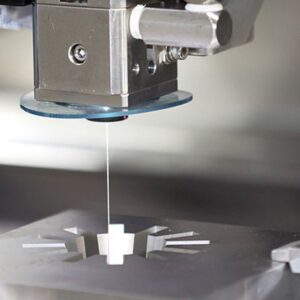Did you ever think about how machines and products are taken apart to study the science of how they function? It is all about reverse engineering. This means, that no matter in which domain you are—a manufacturing domain, automotive, or electronic one—an appreciation of this process opens doors to new ways of creating and solving issues.
In this guide, we’ll explore what is reverse engineering and how does it work? We will cover its uses in different industries, explain how it’s done, and show real examples of where it’s used.
Whether you are an expert or just curious about technology, this article will give you a clear view of this important practice in today’s industries.
So, let’s get started.
What Is Reverse Engineering?
Reverse engineering is a very tedious process used to reveal a product or system. It deals with the study of the structure, components, and functionality of the product or a system to learn how it works and how it has been designed.
This technique is essential for applications such as production, automotive, and electronics, where engineers can somewhat develop valuable knowledge from the already available technologies or products.
Methodologies and Techniques
There are different methods used in reverse engineering; the most prominent include:
Disassembly and Component Analysis:
The professionals will be tenderly disassembling the product, being sensitive to what every part is and for what usage, what material it was made of, and its construction method. In this process, intricate measurements are obtained to give exact digital models obtained by scanning and X-raying using sophisticated equipment with 3D scanning capabilities and CAD software.
Functional Analysis:
Beyond physical disassembly, engineers perform functional tests to observe how components interact under different conditions. This helps in understanding performance characteristics and identifying areas for improvement or replication.
Reverse Engineering Software:
This data is taken and transformed into digital models during reverse engineering, using specialized software tools, to be utilized to recreate complex geometries and internal structures.
Now you know the basics of reverse engineering, it’s time to learn it’s process.
The Process of Reverse Engineering
As said above, reverse engineering follows a structured approach to unravel the intricacies of products or systems.
Here are the key steps involved:
Step #1: Data Collection
The process begins with an intense data-collection exercise. Engineers collect relevant information on the product or system, including technical specifications, design details, and physical samples.
Convenient cases include using methods, such as 3D scanners or X-ray imaging, to capture exact measures of internal structures.
Step #2: Analysis
Engineers, therefore, then instead analyze the data gathered with great intensity. This encapsulates the breaking and tearing up of components to understand the functioning organization’s material and manufacturing.
Computer-aided design software is extensively employed to construct and make digital models from the collected data, enabling visualization of elongated members, and capturing complicated geometries and further alterations.
Step #3: Reconstruction
Based on the insights from analysis, engineers advance into reconstructing digital models of the product or system to create the prototype.
This stage can also involve the application of reverse-engineering software packages that tweak designs to sharpness and support the optimized designs for accuracy and function.
Prototyping methods might include 3D printing or CNC machining of the prototype to replicate it physically for further assessment.
Step #4: Testing and Validation
The next part of reverse engineering is termed testing and validation. Such is in line with one of the engineers’ points, outlining that they would ensure the reconstructed prototype has been subjected to intensive testing to ensure performance parameters and functionality meet the intended design specifications.
Testing may be done virtually, during functional tests, or on-site with functioning test results of the product undergoing reverse engineering to make sure that someone is getting meets the desired standards and requirements.
By going through the process, you must be wondering where exactly reverse engineering comes handy, what are the applications, or where exactly reverse engineering help you.
Let’s discuss this in detail.
Applications of Reverse Engineering
Here are some of its specific applications across major sectors:
Manufacturing Industry
Manufacturers may borrow existing technologies to modify them into improved versions. They conduct reverse engineering of existing products and study inefficient functioning.
This way, the producers can easily keep answering the dynamics and offer rewarded products to the current demands of the average evolving consumer.
Automotive Industry
Automakers thus find themselves using reverse engineering to study and enhance components of a vehicle, such as engines, transmissions, and chassis. Through the systematic dissection and evaluation of competitor vehicles or earlier designs of vehicles, engineers can discover areas for improvement in relation to performance, safety, and fuel efficiency.
But this process makes a provision for automakers to be able to design aftermarket parts that enhance the performance and toughness of their vehicles according to the consumer markets that are so demanding.
Electronics Industry
Reverse engineering helps electronics manufacturers to understand complicated electronic components and circuits. Simply, an engineer disassembles the entire electronic device to understand its design and function.
Make it possible to detect IP abuses, improve the platform and compatibility of products with different generations, and assure compliance with industry standards.
In addition, reverse engineering enables manufacturers to imitate the features they have successfully adopted by mimicking the competitor products.
Benefits of Reverse Engineering
There are lots of benefits of reverse engineering. Some of the most important ones are:
Cost Reduction
Dissecting an existing product helps the company discover how weak the link in the production process is and the material inefficiency used.
Cost-effective improvements can then be effected in the manufacturing, featuring a production method, with choices to bring about the cost reduction in production.
Reverse engineering also enables the support of legacy systems through obsolescence that is prevented by reproducing or by finding an equivalent replacement, which will save the expensive upgrades of the system.
Innovation
Competitive products or studies of obsolete design are a valuable source of generating ideas and innovation. The approach may allow the incorporation of success-proven features of a particular product into new designs, extending more functionality and thus rising to market acceptance.
Rapid prototyping enabled through reverse engineering allows insistent changes in design to be tested rapidly and, in turn, squashes innovation cycles in the creation process.
Maintenance and Repair
Reverse engineering aids the re-manufacturing of outdated parts or components important in certifying and renewing mechanisms whose technologies are formed.
This ensures that operations stay on track with almost complete efficiency and in the least timewise. Further reverse engineering would facilitate the understanding of product structures, and the maintenance programmers can take preventive action to continue enhanced reliability and prolonged life of equipment.
Failure Analysis
This will give a deep analysis of product failures using reverse engineering, pointing out the root causes, like some flaw in the design, material weakness, or assembling errors, which engineers can correct, leading to better product reliability and durability.
When flaws indicative of the potential to cause failure are identified beforehand, this gives the management a chance to refine practices in quality assurance for improvements that guarantee the products meet very stringent reliability and safety levels.
Conclusion
Now you know what is reverse engineering and how does it work. It’s a powerful tool that drives innovation, improves product development, and enhances competitiveness across industries.
So, companies learn from existing products by taking them apart for understanding, bringing valuable insights, which in turn inspire new designs, help to streamline better manufacturing processes, and ensure that the produced products meet market demand.




